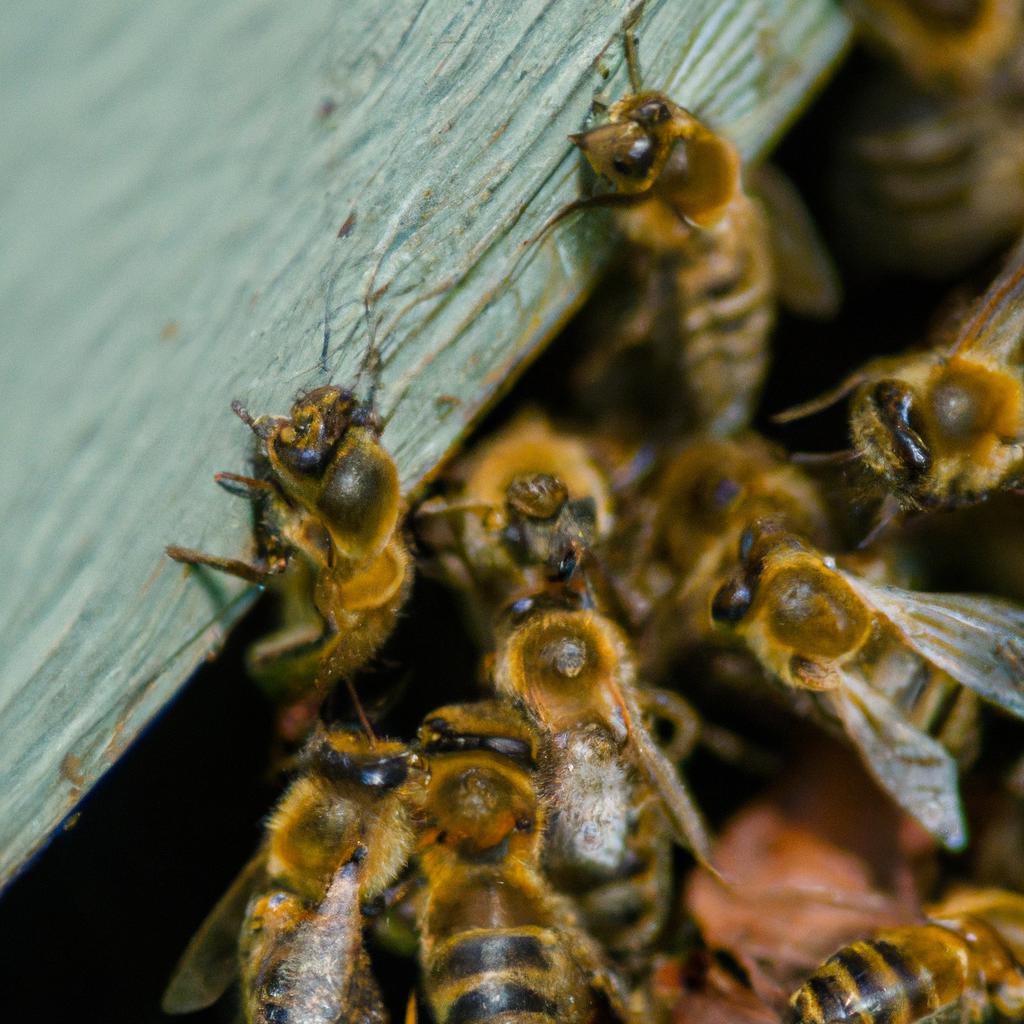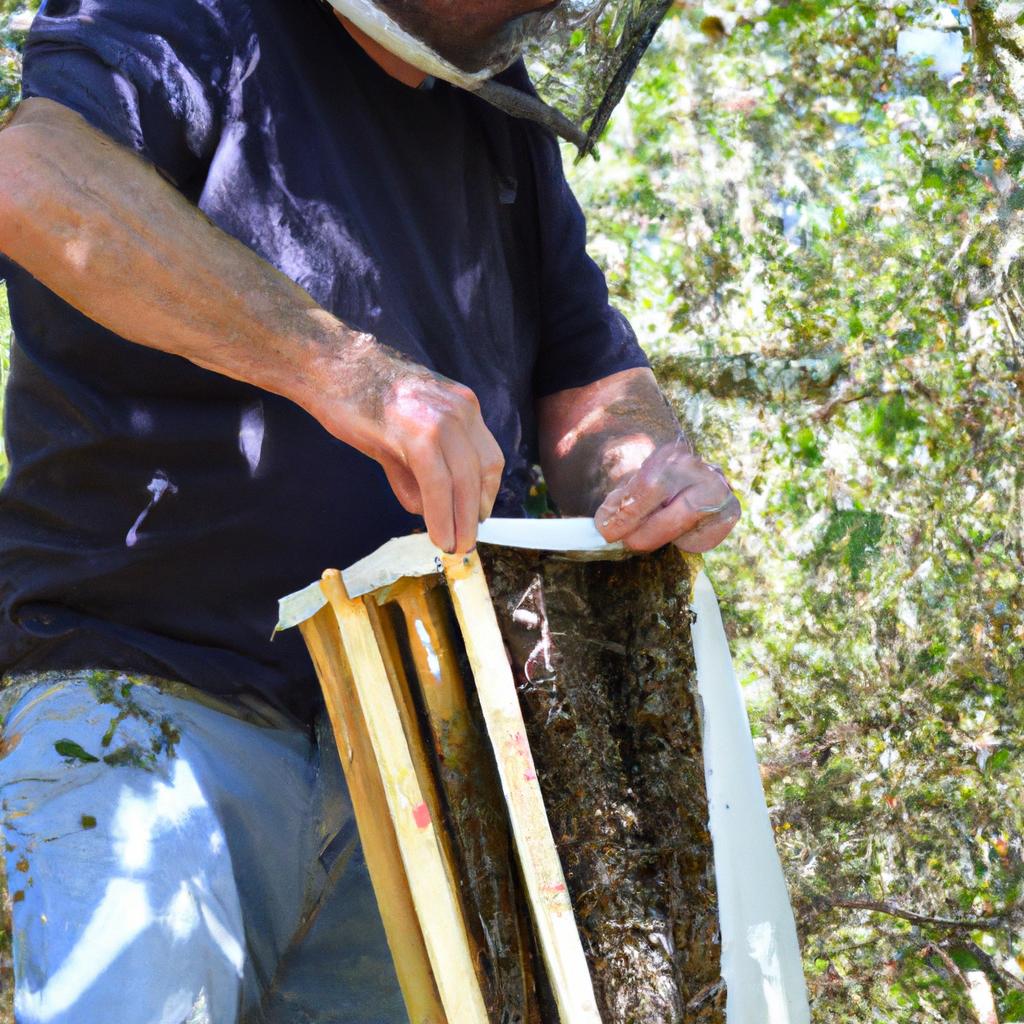As a beekeeper, capturing swarms is an essential part of maintaining healthy hives. Swarm traps are an effective tool for catching swarms, but it’s crucial to know how long to leave bees in a swarm trap to ensure their survival and successful transfer to a new hive.
In this article, we’ll explore the factors that affect the duration of bees in a swarm trap, recommended time frames, signs that bees are ready to be moved to a new hive, and how to safely transfer them. Whether you’re a beginner or an experienced beekeeper, this guide will provide you with the knowledge to capture swarms effectively and care for your bees.
Factors affecting how long to leave bees in swarm trap

Several factors influence how long bees should stay in a swarm trap. These include location and climate, swarm size, availability of food and water, and the presence of a queen bee.
Location and climate
The location of the swarm trap and the climate in which it’s situated are significant factors in determining how long to leave bees inside. In warmer areas, bees may need to be transferred to a hive sooner than in cooler regions. Similarly, if the swarm trap is exposed to direct sunlight, the bees may become overheated, leading to dehydration and death.
Swarm size
The size of the swarm also affects how long bees should remain in the trap. Smaller swarms may require less time in the trap to establish a new hive, while larger swarms may need more time to build up their population.
Availability of food and water
Bees need a constant supply of food and water to survive, and the availability of these resources can impact how long they should remain in a swarm trap. If the bees have access to food and water, they may not need to stay in the trap as long as if these resources are scarce.
Presence of queen bee
The presence of a queen bee is crucial for the survival of the swarm. If the queen is present in the trap, the bees may establish a new hive faster than if they need to wait for a queen to be introduced.
Recommended duration for leaving bees in swarm trap

While there are no hard and fast rules for how long bees should remain in a swarm trap, several recommended guidelines can help ensure the bees’ safety and successful transfer to a new hive.
General guidelines for leaving bees in swarm trap
Beekeepers should monitor the swarm trap regularly to assess the bees’ progress and determine when they’re ready to be moved to a hive. As a general rule, bees should remain in the trap for at least two weeks to establish a new hive. However, the duration may vary depending on the factors mentioned above.
Minimum and maximum time frames for leaving bees in swarm trap
The minimum time for leaving bees in a swarm trap should be two weeks, while the maximum time should be four weeks. Leaving bees in the trap for more than four weeks can lead to overcrowding, which may cause the bees to swarm again or become agitated.
Tips for monitoring the bees in the swarm trap
Beekeepers should check the swarm trap regularly for signs that the bees are ready to be moved to a hive. These signs include increased activity and the formation of comb in the trap. Beekeepers should also ensure the bees have access to food and water during their stay in the trap.
In the next section, we’ll discuss the signs that indicate bees are ready to be moved to a new hive.
Recommended duration for leaving bees in swarm trap
General guidelines for leaving bees in swarm trap
While there are no hard and fast rules for how long to leave bees in a swarm trap, there are general guidelines that beekeepers can follow. After two weeks, beekeepers should check the trap every few days to see if the bees have started to build comb. If the bees are building comb, it’s a sign that they have accepted the trap as their new home and are ready to be moved to a hive.
Minimum and maximum time frames for leaving bees in swarm trap
The minimum time that bees should stay in the trap is two weeks. If the bees are removed before this period, they may not have had enough time to build a strong colony, and the transfer to a new hive may not be successful. The maximum time that bees should stay in the trap is four weeks. After this period, the colony may become overcrowded, and the bees may begin to swarm again.
Tips for monitoring the bees in the swarm trap
Beekeepers should monitor the swarm trap regularly to ensure that the bees are healthy and that the transfer to a new hive will be successful. Here are some tips for monitoring the bees:
- Check the trap every few days to see if the bees have started to build comb.
- Ensure that the bees have access to food and water during their stay in the trap.
- Observe the bees for signs of stress, such as excessive buzzing or agitation.
- Ensure that the trap is in a shaded area to prevent the bees from becoming overheated.
- If possible, check the trap during the day when the bees are more active.
Signs that bees are ready to be moved to a new hive
Beekeepers should look for certain signs that indicate that the bees are ready to be moved to a new hive. These signs include:
Behavioral changes in the bees
As the bees start to build comb in the trap, their behavior will change. They will become calmer and less agitated, and their buzzing will become less intense. They may also start to move around less and spend more time building the comb.
Increase in hive activity
As the colony grows and becomes stronger, there will be an increase in hive activity. More bees will be visible, and there will be more movement around the trap.
Formation of comb in the swarm trap
The formation of comb in the trap is a clear sign that the bees have accepted the trap as their new home. Once comb has been formed, the bees are ready to be moved to a new hive.
In conclusion, knowing how long to leave bees in a swarm trap is essential for beekeepers to maintain healthy hives. By following the recommended guidelines and monitoring the bees’ behavior, beekeepers can ensure the successful transfer of the bees to a new hive. Remember, Beekeepinglove.com is your go-to resource for all things beekeeping, so keep following our articles for more tips and tricks.
How to safely move bees from swarm trap to hive
When the bees are ready to be moved from the swarm trap to a new hive, it’s essential to handle them safely and carefully. Here are the tools and equipment you’ll need to transfer bees from a swarm trap to a hive, along with a step-by-step process for the transfer.
Tools and equipment needed for transferring bees
- Bee suit and gloves
- Smoker
- Bee brush
- Hive tool
- Empty hive with frames
- Feeder
Step-by-step process for transferring bees to hive
- Choose a suitable location for the new hive and set it up with frames and a feeder.
- Light the smoker and approach the swarm trap slowly and carefully.
- Gently brush the bees into the smoker, taking care not to harm them.
- Remove the top of the swarm trap and transfer the bees into the new hive.
- Use the hive tool to remove any remaining bees from the swarm trap and transfer them to the new hive.
- Close the hive and monitor the bees to ensure they settle in comfortably.
Precautions to take when handling bees
It’s essential to take precautions when handling bees to prevent stings and protect the bees. Wear protective gear, including a bee suit and gloves, and use a smoker to calm the bees. Avoid sudden movements and loud noises, which can agitate the bees.
Conclusion
Capturing swarms is an exciting and essential part of beekeeping. Knowing how long to leave bees in a swarm trap ensures their survival and successful transfer to a new hive. By following the guidelines outlined in this article, beekeepers can capture swarms effectively and care for their bees.
In summary, beekeepers should monitor the swarm trap regularly, provide access to food and water, and be familiar with the factors that affect how long to leave bees in a swarm trap. When it’s time to move the bees to a new hive, beekeepers should use the proper tools and equipment, follow a step-by-step process, and take precautions to ensure the bees’ safety.
By following these recommendations, beekeepers can maintain healthy hives and continue to enjoy the many benefits of beekeeping. For more information and resources on beekeeping, visit BeeKeepinglove.com.
